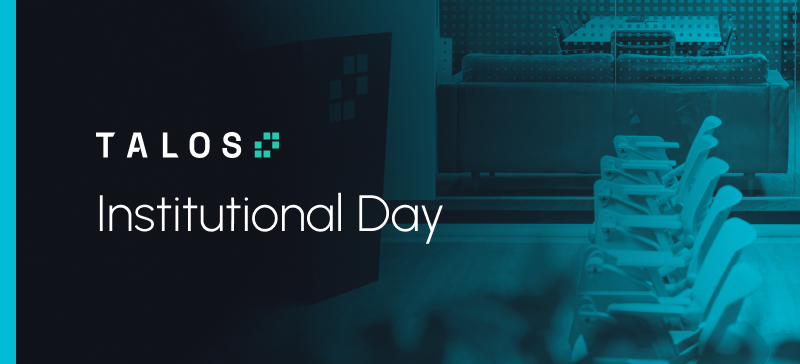Building for 24/7: The Operational Challenge Reshaping Institutional Digital Asset Trading
In this e-Forex feature, industry leaders explore what it takes to build scalable, compliant, and resilient infrastructure for 24/7 crypto markets. Talos’s Head of APAC, Samar Sen, offers key insights into why repurposing legacy trading systems won’t cut it—and how firms can design for continuous operation in a fragmented and fast-moving landscape.
Building for 24/7: The Operational Challenge Reshaping Institutional Digital Asset Trading
Introduction
In this e-Forex feature, industry leaders explore what it takes to build scalable, compliant, and resilient infrastructure for 24/7 crypto markets. Talos’s Head of APAC, Samar Sen, offers key insights into why repurposing legacy trading systems won’t cut it—and how firms can design for continuous operation in a fragmented and fast-moving landscape.
When Goldman Sachs announced its cryptocurrency trading team in May 2021, followed by JPMorgan opening crypto fund access to wealth clients, the institutional narrative was simple: get exposure to digital assets, fast.
But as more firms have moved beyond pilot programs into full-scale operations, a more complex reality has emerged. How can institutions build sustainable, compliant, and competitive digital asset operations that align with institutional-grade standards?
The early rush to launch crypto desks through whatever means available has given way to strategic deliberation. The stakes are higher, the regulatory environment more complex, and the operational requirements far more sophisticated than many initially anticipated. “For many firms, adapting internal operations to meet these standards can quickly become a distraction from their core business,” observes Nathan Heaney, Institutional Sales at MAS Digital. “And in many cases, simply isn’t viable.”
This reality has created a new set of strategic decisions that didn’t exist in traditional asset classes. Should firms build proprietary infrastructure, partner with crypto-native providers, or adopt white-label solutions? How do you evaluate liquidity in fragmented markets? What does institutional-grade custody mean in practice?
The answers are reshaping how the world’s largest financial institutions approach digital assets. They also reveal just how different this market is from everything that came before.

When Traditional Systems Hit Their Limits
Most institutional trading firms assume digital assets are just another instrument to plug into existing order management systems, risk engines, and settlement workflows. The reality is far more complex.
“Trying to re-purpose an existing trading system (e.g., FX) for crypto often does not work, due to technical details such as the decimal precision required in digital asset markets,” explains Samar Sen, Head of APAC at Talos. “The data structure primitives need to be purpose-built from the ground up for digital assets.”
This isn’t a minor configuration issue. Traditional trading systems are built around the standardized tick sizes, settlement cycles, and precision requirements of established asset classes. Digital assets operate with different mathematical foundations.
Bitcoin trades to eight decimal places, Ethereum to 18. Risk calculations, position sizing, and P&L attribution systems that work perfectly for FX or equities often break when confronted with these parameters.
The technical challenges extend beyond mathematics into fundamental system architecture.
“Integrating digital assets into institutional workflows means addressing a new layer of complexity around performance, latency and interoperability,” notes Jarrod Yuster, Founder and CEO of Pico. “Are your systems ready to handle 24/7 trading? Are you connected to the right exchanges and trading venues?”
Sen’s team at Talos has experienced these integration challenges. “Crypto exchanges use disparate protocols (e.g., REST, WebSocket, and sometimes FIX) requiring custom integrations for each connection,” he explains. “Variability in price feeds, order book formats, and settlement practices complicate centralized data handling.”

The End of One-Stop Shopping
The infrastructure complexities outlined previously have contributed to a fundamental shift in how institutions approach digital asset partnerships. Rather than attempting to force-fit existing systems or build everything in-house, firms are increasingly turning to specialized provider ecosystems.
The institutional approach has evolved considerably from early adoption patterns. Where speed of market entry once mattered above all else, institutions today apply rigorous selection criteria that mirror traditional asset management standards.
“When selecting a digital asset provider, institutions are ultimately looking for the same fundamentals they expect in traditional markets: trust, performance, and efficiency,” explains Sameer Shalaby, Co-Founder and CEO of VersiFi.
“There’s a shift toward specialised, independent providers that deliver deeper expertise in specific areas, whether it’s custody, liquidity, or reporting,” notes Heaney. He contrasts this with earlier approaches: “In the early days, it was a one-stop-shop.”
Sen at Talos observes this shift toward what he describes as “modular orchestration-layer” thinking, where institutions “gain direct access to multiple liquidity venues, segregated custody, and sophisticated execution tools” through coordinated partnerships.
Rather than providing services directly or connecting to single venues, Sen’s team has built what they describe as technology that “connects institutions to key providers in the digital asset ecosystem—exchanges, OTC desks, prime brokers, lenders, custodians, and more—through a single interface.”
Ongoing Oversight
To ensure long-term success, firms must continuously assess four key areas: security, regulatory compliance, scalability, and performance.
Sen emphasizes that this oversight must be systematic: “Post-implementation, institutions must maintain rigorous oversight of security posture through regular audits, penetration testing, and adherence to best practices.”
Institutions must also anticipate fast-moving regulatory developments. Sen adds that institutions must evaluate “business sustainability: many of these technology providers are startups, and so it’s important to assess who their backers are and how much runway they have to withstand market downturns.”

Evaluating Liquidity in Fragmented Markets
The different partnership strategies institutions now employ ultimately hinge on a fundamental question: where can they access reliable liquidity?
This challenge is more complex in digital assets than in traditional markets. Sen describes how institutional traders must evaluate “order book depth, fill ratios, settlement speed, and counterparty transparency” across multiple venues.
Sen emphasizes the importance of diversification in liquidity sourcing: “Institutions should diversify liquidity sources and use technology to aggregate across venues, reducing counterparty risk and optimizing execution.”
As Sen notes, “Different venues and providers use different APIs, WebSockets, or proprietary protocols,” making it challenging to efficiently tap multiple liquidity sources without specialized technology solutions.
Talos advocates for the aggregation model. “Purpose-built platforms like Talos help overcome these integration hurdles, providing harmonized access to fragmented crypto markets,” Sen explains.
The New Institutional Reality
A clear divide is emerging among institutional players in digital assets—not between early adopters and late entrants, but between those building sustainable operational capabilities and those still treating digital assets as a peripheral activity.
“Many organizations are not ready for this new paradigm,” Sen notes, referring to the operational demands of continuous trading and instant settlement.
The institutions that master these operational challenges first aren’t just gaining digital asset exposure. They’re developing next-generation market infrastructure capabilities that may prove difficult for competitors to replicate.
Reprinted from e-Forex.net. View the June 2025 issue here.
Latest insights and research
Request a demo
Find out how Talos can simplify the way you interact with the digital asset markets.






